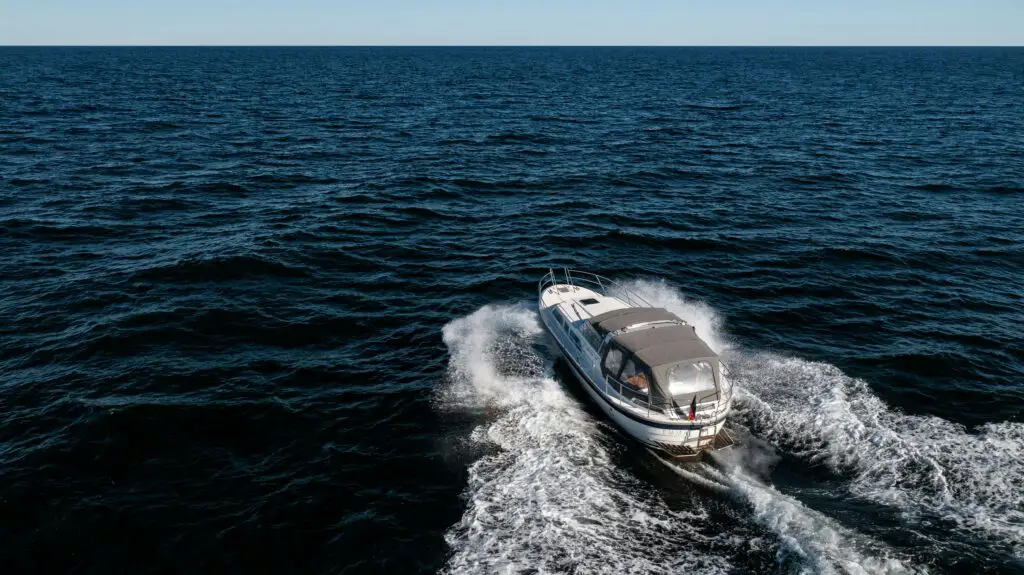Boat Insurance for Older Boats
Owning an older boat comes with a unique sense of pride, especially if it’s a vintage boat like a Chris-Craft boat or a classic fiberglass boat. However, securing the right boat insurance for older boats can be challenging due to factors like age, maintenance, and risk assessment. Unlike modern boats, aging vessels often require specialized insurance policies to ensure proper protection.
This guide explores everything you need to know about classic boat insurance, including coverage options, insurance premiums, and how to find the best insurance provider for your cherished vessel.
Understanding Boat Insurance for Older Vessels
Defining Older Boats
Not all older boats are classified the same. Insurers categorize them based on age and historical significance:
- Historic boats (typically over 50 years old)
- Antique boats (pre-1950s, often wooden boats)
- Classic boats (25-50 years old, including fiberglass boats)
- Late classic boats (15-25 years old)
The boat’s age directly impacts insurance considerations. A 30-year-old boat may still be seaworthy, but insurers often view older vessels as higher risk due to potential wear and tear.
Unique Challenges of Insuring Older Boats
Securing vintage boat insurance presents several hurdles:
- Increased maintenance and repair costs – Older boats often require specialized parts and labor, increasing insurance costs.
- Limited insurance options – Many insurance companies hesitate to cover antique boats, pushing owners toward specialized insurers.
- Higher premiums and risk assessment – Insurers evaluate risks based on seaworthiness, material (e.g., wooden boats vs. fiberglass), and boat usage.
Types of Coverage for Older Boats
Standard Coverage Options
Most boat insurance policies for older vessels include:
- Actual Cash Value (ACV) policies – Pays out based on the boat’s depreciated value.
- Agreed Value policies – Offers a predetermined payout, ideal for classic boats with stable valuations.
- Liability-only coverage – Covers damages to others but not your own vessel.
Specialized Coverage for Vintage and Classic Boats
For vintage boats, additional options may include:
- Boat restoration coverage – Helps fund boat restorations using early boatbuilding techniques.
- Usage limitations and lay-up periods – Some policies restrict boating season use to reduce risk.
- Specialized repair services – Marine insurance providers may recommend approved facilities familiar with classic boat design.
Factors Affecting Insurance Premiums
Boat-Specific Factors
- Age and condition – A well-maintained older boat may qualify for lower insurance rates.
- Maintenance history – Proper documentation can reassure insurers.
- Rarity and collectibility – Rare vintage vessels like classic Chris-Craft boats may have higher agreed values.
Usage and Environmental Factors
- Intended use – Boat racing or commercial use increases risk.
- Navigational areas – Ocean, lake, or coastal areas influence insurance premiums.
- Storage and security – Keeping your boat in a marina with safety equipment can lower costs.
Finding the Right Insurance Provider
Researching Insurance Options
Not all insurance companies offer classic marine insurance. Compare:
- Specialized vs. general insurers – Companies like Magnum Insurance or Boat US/Geico may cater to vintage boats.
- Company reputation – Check reviews and financial stability.
- Coverage options – Ensure the insurance policy meets your needs.
Working with Marine Insurance Brokers
An insurance broker specializing in marine insurance can:
- Provide access to multiple insurance providers.
- Offer customized coverage recommendations.
- Help navigate limited insurance options for aging vessels.
Tips for Insuring Your Older Boat
Preparing for Insurance Application
- Conduct a professional survey – Proof of seaworthiness helps secure coverage.
- Document maintenance – Keep records of repairs and upgrades.
- Gather historical information – Provenance can increase value for antique boats.
Negotiating Better Rates
- Install modern safety features – GPS, bilge pumps, and fire suppression systems reduce risk.
- Complete a boater safety course – Some insurers offer discounts.
- Bundle with other insurance policies (e.g., auto insurance, life insurance).
Claims Process for Older Boats
Understanding the Claims Procedure
- Report incidents immediately.
- Work with adjusters familiar with classic boats.
- Decide between salvage, repairs, or replacement.
Maximizing Claim Outcomes
- Provide thorough documentation.
- Use approved repair facilities.
- Understand policy limits and exclusions.
Future Trends in Older Boat Insurance
Technological Advancements
- IoT devices for real-time risk monitoring.
- Digital platforms for easier policy management.
- Predictive maintenance to lower insurance costs.
Market Changes
- Growing niche markets for vintage vessels.
- Potential regulatory changes affecting classic boats.
- Sustainable boating practices influencing insurance solutions.
Final Thoughts
Securing boat insurance for older boats requires research and the right insurance provider. Whether you own a classic boat, a vintage vessel, or an antique wooden boat, understanding coverage options, insurance premiums, and claims processes ensures your maritime adventures remain protected.
For boat owners seeking tailored insurance solutions, consulting an experienced insurance agent or marine insurance broker is the best way to safeguard your cherished vessel.
Visit Magnum Insurance or other specialty insurance companies to explore the best boat insurance offering for your needs.
By staying informed, you can enjoy your classic boat with confidence, knowing it’s covered by the right insurance policy. Happy sailing!
